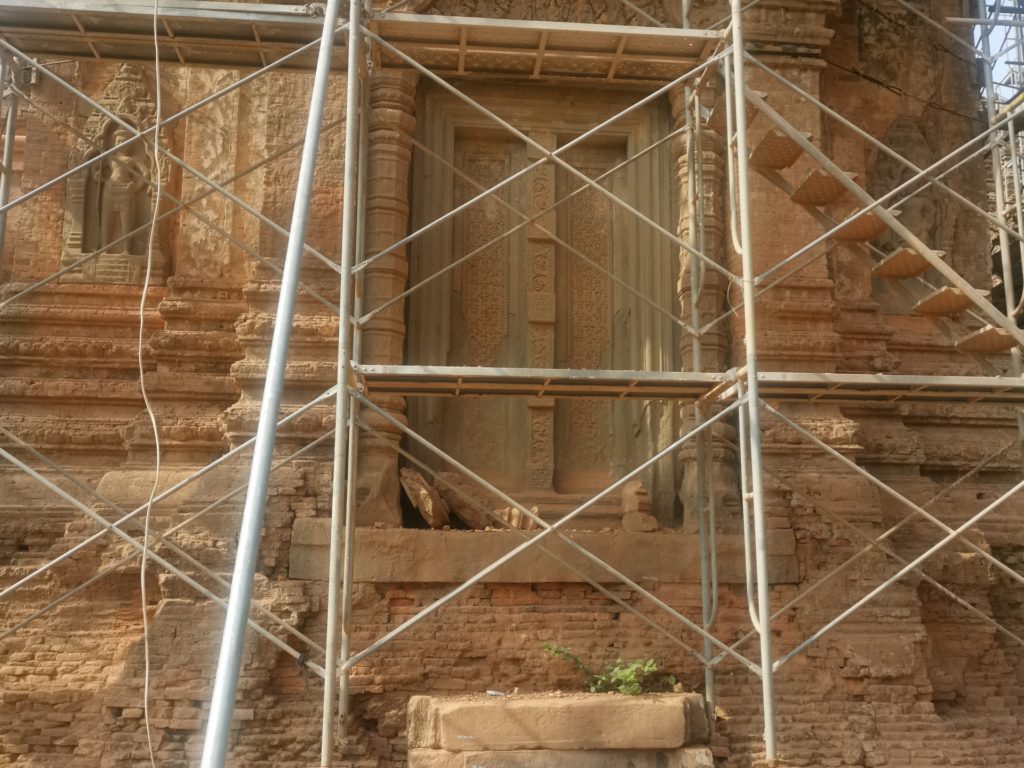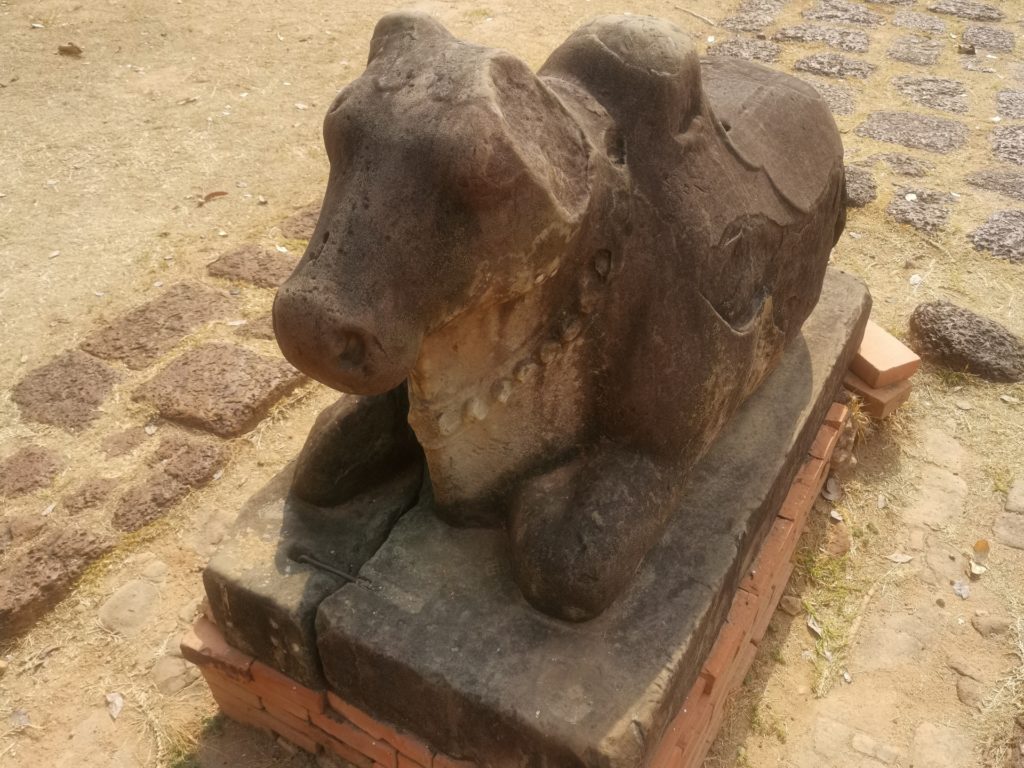Roluos Group: Bakong, Preah Ko and Lolei
Right next to the village of Roluos is the temple complex of the Roluos Group, which includes three of the most important temples in the region: Bakong, Preah Ko and Lolei. In addition, the ruins of two other temples that have already fallen into disrepair, namely Prei Montí and Trapéang Phong, can be found in the same complex

Bakong temple complex
Preah Ko, Bakong and Lolei were built in the late 9th century and thus most likely fall in their origins during the reign of King Jayavarman II. He made the settlement of Hariharalaya (which owes its name to the deity Harihara, a deity that is half Shiva and half Vishnu, and is geographically located in the present Roluos area) the capital of the Khmer Empire, which at that time was just in its infancy. This circumstance suggests the importance of the construction of the three temples of the Roluos group and also explains the size and enormous attention to detail in the design of the buildings.
While Jayavarman II actually resided in Hariharalaya with some interruption until the end of his reign, it was also his successors who implemented further additions or the completion of the three temples Preah Ko, Bakong and Lolei, to the form as we know it today. Jayavarman III, Indravarman I and Yasovarman I, who followed him in chronological order, initiated for example the construction of the oldest and largest water reservoir of the Khmer Empire, the so-called “Baray Indratataka”, the “Baray of Lolei”. With King Yasovarman I, the heyday of Hariharalaya and the entire Roluos region finally ended, as he moved his headquarters to Angkor.
But which architectural details and special features are behind the temple complexes of Preah Ko, Bakong and Lolei?
At first glance, it is immediately apparent that all three structures are arranged along a north-south axis. For example, the top of the pyramid of the Bakong temple and the center of the water reservoir are at exactly the same height. In addition, there are two axes that run parallel and also reveal an order of content: on the one hand, the axis of the palaces, and on the other, the axis of the fertility cult, on which, for example, the baray and the fertility symbol of the Bakong temple can be found.

Restoration works on the small temple of Lolei
The temple Lolei is composed of four towers with a base of about 6 meters in two rows. The temple towers are arranged in a square, but not quite symmetrical, which suggests that two more tower buildings were planned in the original construction plan. Today, two of the four towers are still largely preserved, the former wall of the temple has unfortunately already crumbled into its basic remains. The originally Hindu temple now serves as a Buddhist monastery.

Sculpture of a cow in the temple Preah Ko
The temple Preah Ko contains six temple towers, which are stylistically very similar to those of the Lolei temple. In their arrangement, they consist of three larger towers, each of which is complemented by a slightly smaller tower to the west. The central sanctuary of the temple was dedicated to Paramesvara, which is surrounded by two square walls and another quite wide moat. The temple Preah Ko and its breathtaking stylistics are eponymous for the Khmer building style at that time. The modern name of the temple “Temple of the Sacred Ox” can be traced back to three bull figures that are supposed to represent Nandi, the mount of the deity Shiva.
The temple Bakong consists of five steps and is dedicated to the deity Shiva. The steps were built in blocks of sandstone and in total are about 14 meters high. This size was very considerable for the buildings of that time and in itself represented an innovation in the architecture of that time. Around the base of the pyramid eight so-called “cult rooms” were built, which are supposed to remind of the ancestors of King Indravarman I. Nowadays, there is also a Buddhist monastery in this temple.
The Roluos group is one of the architectural pioneer works of its time and had a decisive influence on the buildings of the Khmer Empire. For this very reason, a visit to these temple complexes is definitely worth a trip.